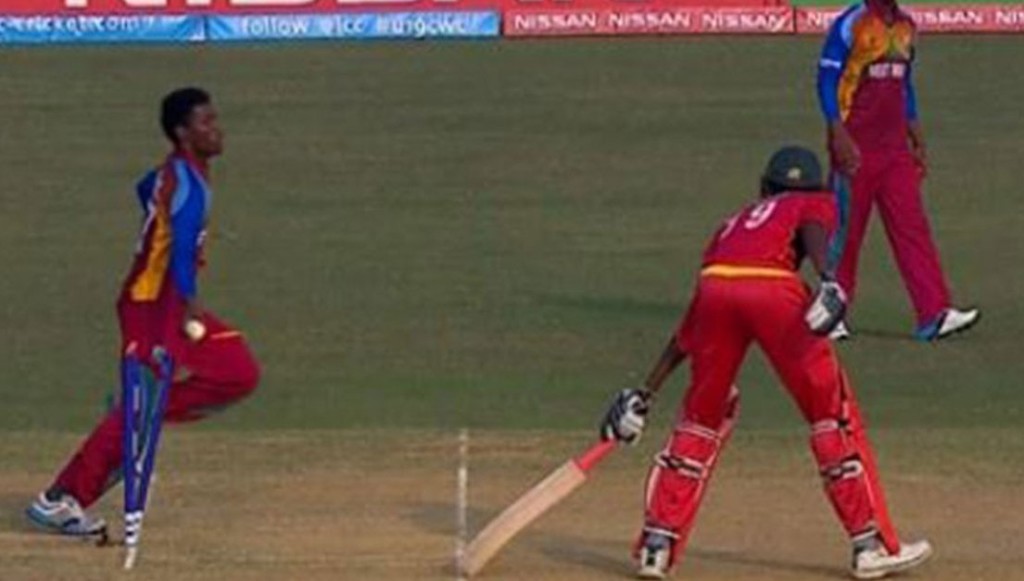What, I ask, is wrong with running out an errant batsman?
When news of the latest Mankad issue in the U19 World Cup broke, when Zimbabwe were beaten by West Indies in the last over, we had in the office what we like to call ‘a robust discussion’ of its merits.
I just don’t get it. The ‘victim’ is a batsman who has chosen to break the rules. Law 29: A batsman shall be considered to be out of his ground unless his bat or some part of his person is grounded behind the popping crease at that end.
The non-striking batsman shall remain behind the crease until the bowler is in his delivery stride.
Am I alone in thinking the rules are there to ensure the smooth running of the game and to provide the boundaries that set the standard of the game?
‘It’s against the spirit of the game,’ said my esteemed colleague and managing editor of SA Cricket magazine, Tom Sizeland. ‘The least he could do is warn the batsman’.
Why? I ask. Why does he need to remind the batsman of the rules?
If AB de Villiers strides outside the crease, the better to slam Moeen Ali over the long-off fence, swings and misses (unlikely, I know, but bear with me), is Jonny Bairstow going to say, ‘Next time, AB, I’m going to stump you..’? Is he hell.
And let’s put the ‘spirit of the game’ in its rightful place. What Douglas Jardine and Harold Larwood did in the Bodyline series was ‘against the spirit of the game’, yet we now celebrate their descendants as fine and fierce strike bowlers.
That applies, too, to ‘walking’. Remember Stuart Broad popping up a blatant catch in the Ashes Test, but because Aleem Dar wasn’t paying attention, he was given not out. That was the day the ‘Three Lions’ became the ‘Three Cheetahs’.
Some pointed out that the hapless Zimbabwean victim in this case was ‘just millimetres’ out of the crease. Well, we all know how keen we are on millimetres. The batsman who has just lost his middle stump will wait midway to the pavilion in the hope that Morne Morkel was a millimetre over the line. And if he is, the batsman comes scampering back with a song in his heart and a twinkle in his eye, as if to say, ‘I would have smashed that one had he been a millimetre back’.
And when run-outs (mankad excepted) are investigated, the TMO searches long and hard to see if there are grounds to send back the batsman. Ask Chris Jordan. He had easily made his ground when Bangladeshi Shakib Al Hasan threw down the stumps in their humiliating 2015 World Cup match.
But minute inspection showed the velocity of his dive caused his bat to ‘bounce’ after reaching his ground. ‘OUT!!!’ screamed the TMO screen. There was no ‘Do you want to withdraw your appeal?’ question in that case, as there was this time.
In fact, the umpires should not have even asked the question. ‘Howzat??’ the Windies asked. TMO take a look. ‘OUT!!!’ End of story.
The same applies to a batsman well within his crease in a stumping appeal. The TMO will examine minutely whether his foot was a millimetre off the ground when the bails came off.
And if we want to talk about unfair dismissals, how about the non-striker being run out when a full-bodied drive by the batsman merely kisses the bowler (who may even be taking evasive action) on its way to the stumps at the non-striker’s end. ‘OUT.’
The bowler, in many cases, is not even aware that he touched the ball, or if he did, it was the faintest of nicks off a fingertip. He is not even remotely in control, but because it touched him, the non-striker is out. That bowler doesn’t say, ‘Aw, shucks, ump, I didn’t even see it. I’m not going to appeal.’ The batsman walks, through absolutely no fault of his own.
But when backing up too far, knowing he is breaking the rule? That’s unfair?
If the cricketing community is so incensed about this rule, they should put pressure on to have it changed. Yeah, backing-up is permitted to two, three, four, 17 metres…
The West Indians wanted to win. The Zimbabwe batsman was out of his ground. Game over. Lesson learned.







